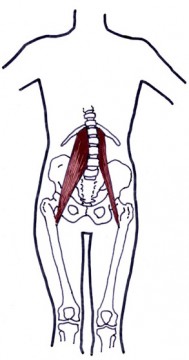 Everyone has a tight psoas, or at least one that is tighter than the other. There is no such thing as true ambidexterity.
Everyone has a tight psoas, or at least one that is tighter than the other. There is no such thing as true ambidexterity.
No one is perfectly balanced on both sides; handedness is part of our design. In general, we are dominant on one side though that dominance can switch from top to bottom.
The question that becomes how do I know if I have a too-tight psoas, or one that is causing my problems?
Even though I work with back and other types of physical pain, I am not a physical therapist and don’t do a lot of muscle testing.
It isn’t that I find tests to be unnecessary, but they don’t tend to help me help people change.
If someone shows up to see me with back or any other type of pain, I take it for granted that they don’t move well and start working on changing their intrinsic patterns.
For me changing patterns is how I approach pain problems because whether you have a tight psoas or not is actually rather meaningless compared to how you use your psoas in daily life.
I am probably being too simple (though it has served me so far) but I take it for granted that almost all back, hip, and groin pain involves a tight psoas so what is the real need to test and affirm that?
That said, in all of my psoas workshops I am asking people to feel for their tighter psoas to develop an understanding of their hip joint and its available rotation.
One of the standard releases that I work with called Foot on a Block, is one way I ask people to feel which their tight psoas is.
If you stand on a block with one foot and hang the other foot off the block towards the floor, you should ideally feel which leg is more willing to release out of its socket. The leg that isn’t interested in letting go is your tight psoas.
But I know from offering these thousands of times, not everybody is tuned in to this type of feeling.
From a yoga perspective, I used to offer this very unscientific test for psoas length.
- Go up into a handstand at the wall with your hands as close to the wall as possible.
- Start with both heels against the wall and start to lower one leg straight down keeping the opposite heel on the wall.
- At a certain point, the heel on the wall will not be able to stay connected as the lowering leg descends.
- The leg that pulls the heel off of the wall first is the tight psoas.
In the next post, I’ll go over the physical therapist’s standard test for psoas length called the Thomas test.
